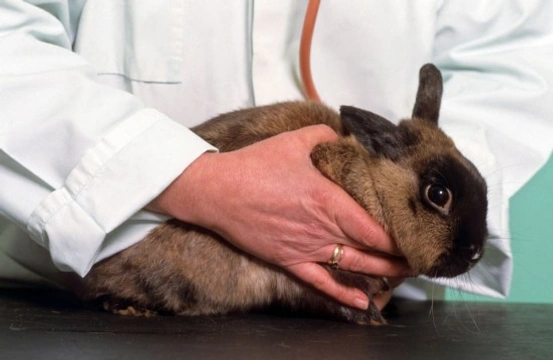
Fly strike in rabbits
Fly strike is a rather disgusting condition that rabbits are unfortunately prone to suffering from during the warmer months, and rabbits are most at risk from the condition when the weather heats up and flies become active in large numbers, seeking new places to lay their eggs.While fly strike is generally more common in rabbits kept outdoors in hutches and runs, house rabbits are by no means immune to the condition. Whether your rabbit lives indoors, outdoors or a combination of both, it is important to ensure that you are well informed about fly strike, what you can do to prevent your rabbit from contracting it, how to identify it and what to do if your rabbit becomes affected. Read on to learn more!
What is fly strike?
Fly strike, or to give it its scientific name, ‘Myiasis,’ is the name for a condition that occurs when large blowflies such as the green bottle and blue bottle lay their eggs on a rabbit. Generally, flies are attracted to orifices such as the eyes or anus, sores and open wounds, or damp, dirty fur that is wet with urine or diarrhoea. The flies are attracted by smell, and will quickly lay their eggs around the area in question, which will hatch in just a few hours into maggots that literally eat the rabbit’s flesh, releasing harmful and poisonous toxins at the same time.
Preventing fly strike
During the summer months, all rabbits are at potential risk of fly strike, and you should check your rabbit over carefully every day for any signs that eggs have been laid. Fortunately, there are several things that you can do to help to minimise the likelihood that flies will be attracted to your rabbit, and to help to prevent them laying their eggs on your pet.
- Make sure that your rabbit is not being fed too much food or food that is too rich, which can lead to diarrhoea.
- Do not feed too many fresh greens or fruits for the same reason.
- Clean out the hutch daily, removing soiled straw and bedding that can attract flies.
- Check your rabbit over twice a day to ensure that their back end is clean and that their fur is not damp with urine.
- Keep the fur around your rabbit’s back end short by clipping it during the summer months to minimise the chances of it holding faeces and urine.
- Disinfect your rabbit’s bowls, run and hutch at least once a fortnight.
- Clean your rabbit’s eyes and mouth daily, and be on the lookout for any sores or open wounds.
- Consider using fine mesh netting over the wire of your rabbit’s hutch or run, to minimise the chances of flies being able to get in.
Symptoms of fly strike
Even if you are very conscientious about doing everything that you can to prevent fly strike in your rabbit, nevertheless it is important to know the signs to look out for, just in case your rabbit does suffer from fly strike at some point.
- Rabbits that are unable to clean themselves properly due to their size, age or health may be particularly at risk from fly strike, so pay special attention to them.
- If you see any flies on your rabbit or in the hutch itself, clean your rabbit thoroughly and check them carefully for the signs of any eggs on the fur.
- Finding eggs on the fur is of course, one of the earliest symptoms of fly strike.
- Maggots that have hatched on the fur or around the anus are often the first sign of fly strike, as maggots hatch very quickly after being laid. This is why it is important to check your rabbit over twice a day, as a rabbit that is fine in the morning may have fallen prey to flies by the evening.
Treating fly strike
Fly strike is a veterinary emergency, and can become serious and even fatal very quickly. If you find maggots on your rabbit, contact your vet without delay and arrange for your rabbit to be taken into the surgery.In the meantime, remove as many of the maggots from the skin as you can, using a warm, damp cloth to encourage maggots that have begun to burrow to release their hold. Generally, treatment in veterinary practice will involved shaving off as much fur as possible from the affected area and removing the individual maggots with surgical tweezers or forceps, as well as possibly bathing the rabbit to remove any remaining maggots. Undertaking this procedure on a rabbit is not an easy task, as rabbits will normally struggle and fight, and put themselves in danger by means of being difficult to handle and trying to retreat. Your veterinary surgeon will be able to sedate your rabbit, and will work with a team of trained veterinary nurses to ensure that the whole process goes as smoothly as possible, with the minimum amount of stress caused to your rabbit in the process.Finally, a rabbit that has suffered from fly strike will require careful monitoring after treatment, and will generally be prescribed a course of antibiotics to prevent any secondary infections from occurring, as well as possible painkillers or anti-inflammatory drugs.



